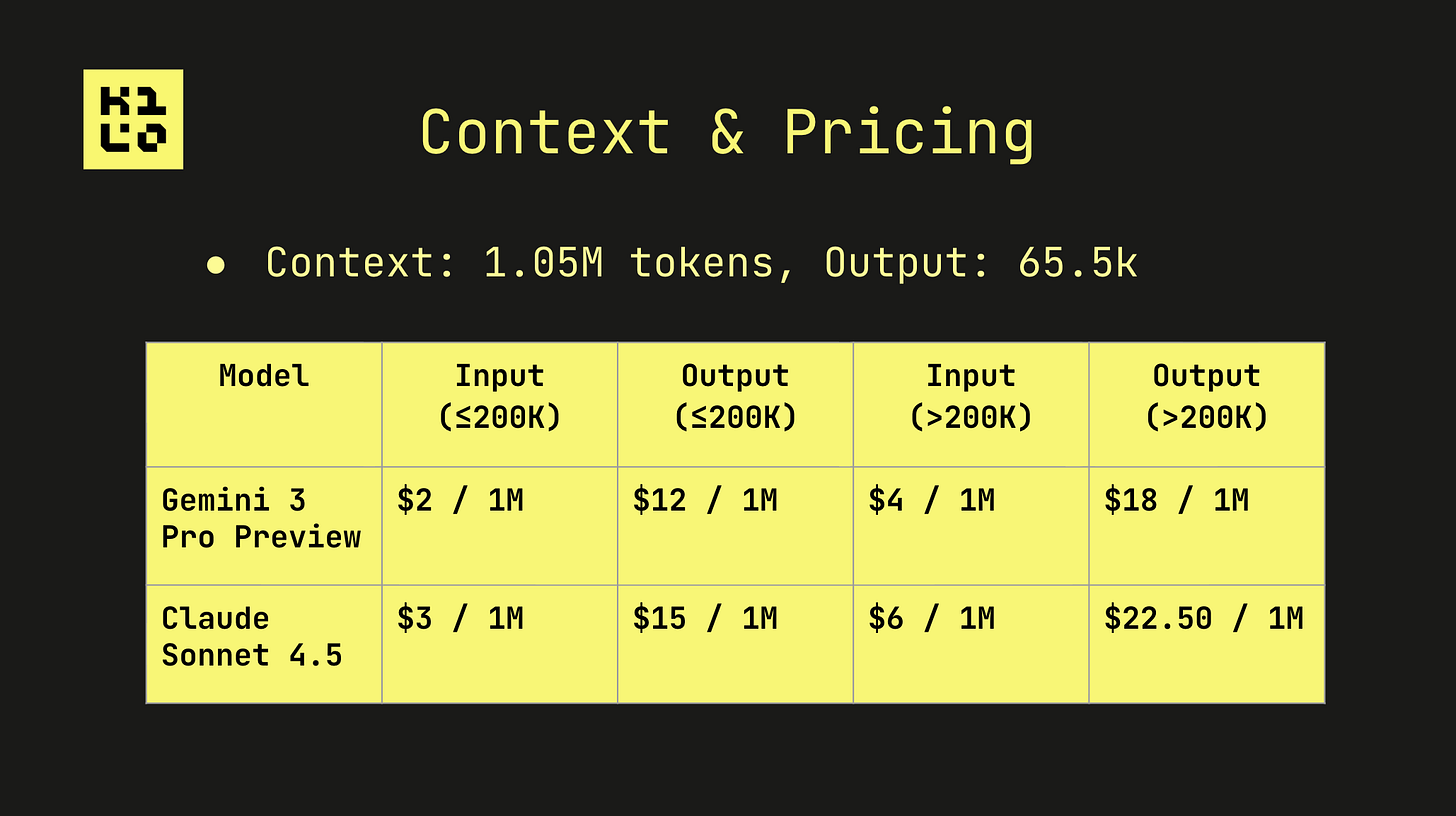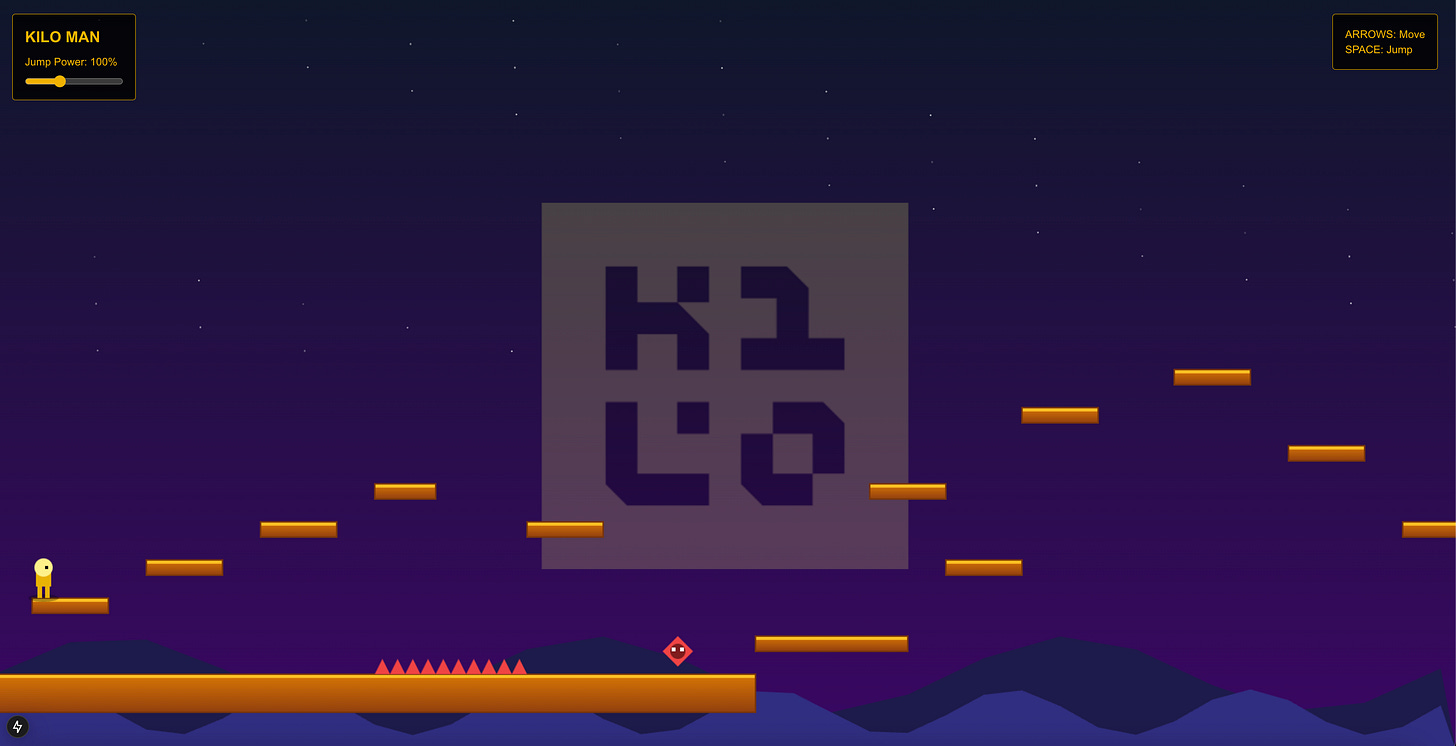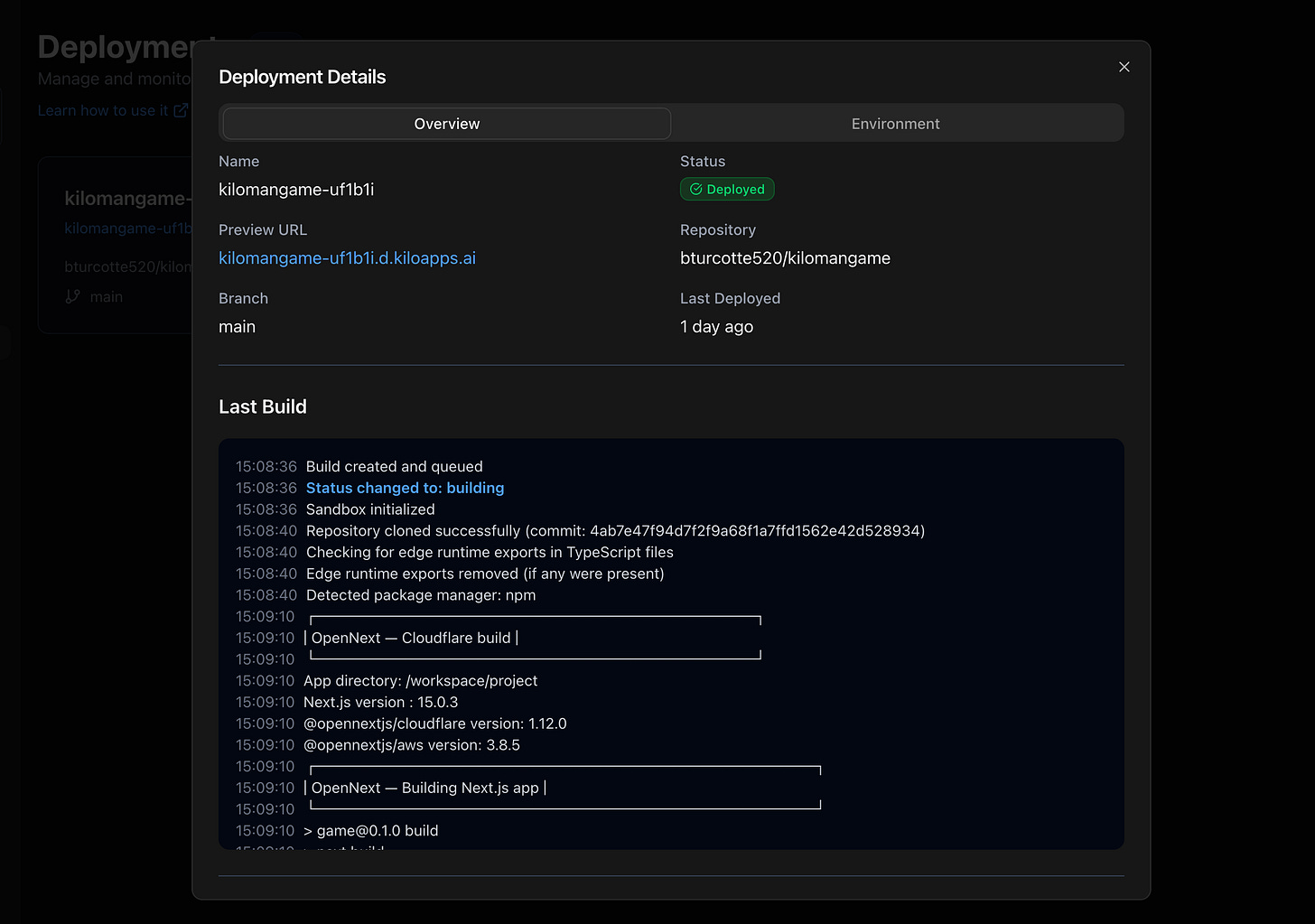Gemini 3 Webinar: Recap
We hosted a Live Session on Gemini 3 Pro Preview. Here's how it went.
We just wrapped an action-packed session walking through Google’s new Gemini 3 model and how it performs inside Kilo Code. We talked benchmarks and pricing, and even shipped an entire video game with one prompt using Kilo Deploy.
Highlights
Headline: Gemini 3 is Google’s most capable model so far.
Crushes benchmarks like GPQA Diamond, Humanity’s Last Exam, MathArena Apex, and tops WebDev Arena and Terminal Bench 2.0
It has 1M+ token context, and up to ~65k output tokens
It’s designed to feel smart, concise, and direct. It’s better at understanding intent so you don’t have to over-prompt.
Why should developers care?
Google explicitly calls Gemini 3 their best vibe coding & agentic coding model yet.
It picks human-sensible architectures and libraries, writes extendable code, and organizes multi-file React/Next.js projects in a way that feels like a thoughtful human engineer, according to our experiments.
Pricing vs Claude Sonnet 4.5
At typical prompt sizes (<200k tokens), Gemini 3 Pro is slightly cheaper per input/output token than Claude Sonnet 4.5.
In long-context (1M tokens), Gemini is more cost-efficient on both input and output.
With Kilo’s open model selection, you could use Gemini for heavy reasoning/design, then switch to more inexpensive models for smaller implementation tasks, without changing anything about your workflow.
Live Demo: Building & Deploying Kilo Man in One Prompt
We showed an end-to-end flow using Gemini 3 Pro Preview in Kilo Code to build a playable (and honestly, pretty fun) video game in one prompt:
Prompting Kilo in Orchestrator Mode
Here’s the prompt we gave to Kilo Code, set to Orchestrator mode:
“Create a modern, detailed 2D platform game called “Kilo Man” with a humanoid character that has to avoid obstacles and moving “monsters” to reach a final goal (like Super Mario).
It should be full screen, with a parallax, aesthetic background, and a black and yellow theme. The game camera should follow the player, and there should only be one, fairly long, scrolling level.
Include a slider that adjusts the player’s jumping height.”
Here’s what happened next:
Agent Orchestration in Kilo Code
Kilo’s Orchestrator mode created a subtask for Architect mode.
Architect wrote an implementation and architecture plan to a markdown file in the project repository:
Tech stack: Next.js 15, React, Tailwind, HTML5 Canvas
Systems for camera, enemies, physics, parallax visuals, and a slider for jump height.
Orchestrator then handed off to Code mode, which implemented the full app according to the plan.
Result: a fully playable platformer
Fullscreen, parallax background, patrolling enemies, restart on death, follow-camera, jump-height slide. None of this was micromanaged in the prompt.
All generated in one shot, then ran locally:
Deploying with Kilo Deploy (early testing feature)
We connected GitHub to Kilo via the Integrations tab in the Kilo Dashboard.
Went to Deploy → “New Deployment” → selected the Kilo Man repo & branch → clicked Create deployment.
Kilo built the project and gave a shareable production URL for the game:
You can play Kilo Man here:
And, you can be an early tester of Kilo Deploy today! Visit our Discord to learn more:
Questions We Covered (Q&A Highlights)
Q: What’s Kilo Code’s long-term plan for autonomous debugging?
Today: Use our native Debug mode, which you can pair with any model (including Gemini 3). Also, you can use the CLI in autonomous mode with the
--autoflag.Coming soon: Sign up to be an early tester of code reviews and cloud agents!
Q: How does Kilo Code ship so fast?
Internally, we call it “Kilo Speed”. We have a tight team, fast shipping cadence, and quick feedback loop with our open source community.
Q: Is the Kilo CLI actively developed and core to the product?
Yes, and yes!
Recent features include parallel CLI agents (two agents working in parallel on the same task) and autonomous mode (no approval needed, suitable for pipelines).
Q: Is it better to access Gemini 3 via Kilo Gateway or CLI? How does tool calling work?
It’s the same model either way, so you can choose the CLI or Extension based on your personal workflow preference.
Q: Do parallel agents use Git worktrees under the hood?
Yes, they do! That’s how they don’t overwrite/conflict with each other.
Q: Is Kilo based on Cline/Roo and is it up to date?
Kilo originally forked Roo, then pulled in all the best from Cline.
Kilo is a superset of the best open-source features: take the best from what already exists, and keep evolving from there.
Q: Are you accepting community contributions? Any best practices?
Absolutely!
Contributions, bug reports, and feature requests go through GitHub Discussions, so feel free to post there with details and screenshots, if possible.
Q: Any more events coming?
What This All Means
Gemini 3 brings frontier-level reasoning + huge context + good taste in code.
Kilo Code’s agentic orchestration (Architect / Code / Ask / Debug / Orchestrator) lets you actually use that intelligence in real projects.
With Kilo Deploy, going from “idea in a prompt” → “live app on a URL” is now realistically a one-prompt + few-clicks experience.
And, watch the session replay here:







